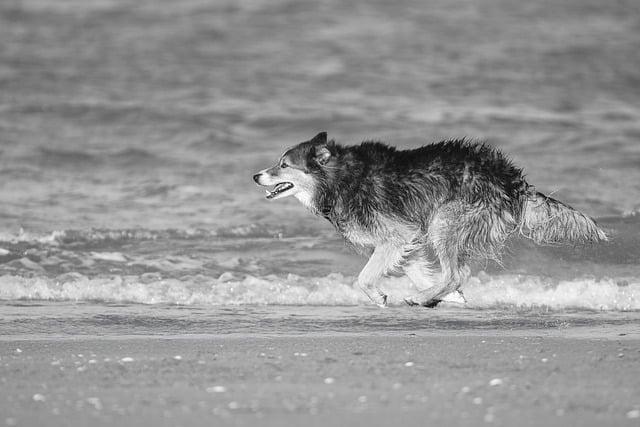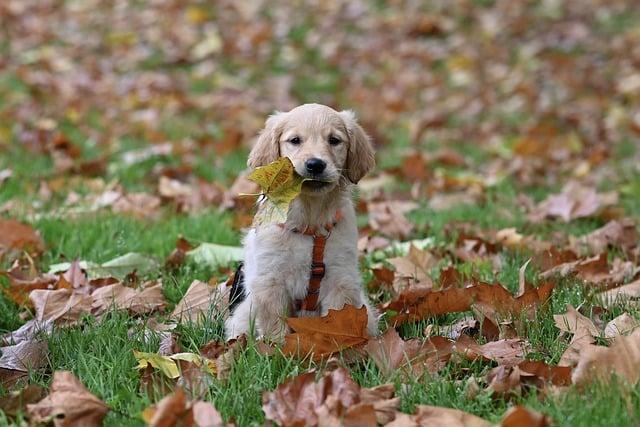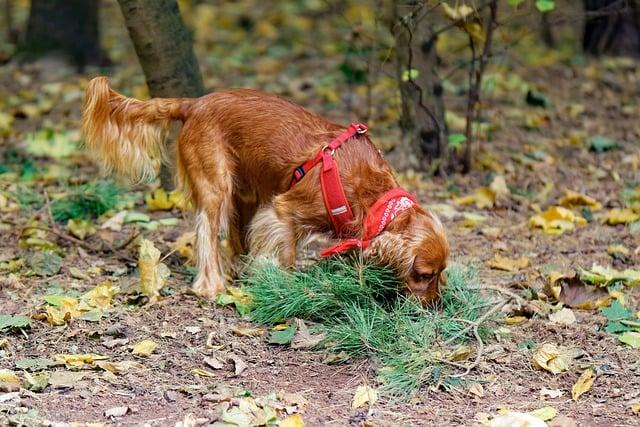Imagine coming home after a long day, greeted by your dog’s enthusiastic tail wagging and joyful barks. But then, they surprise you with an unexpected lick in a rather private area. While this might seem shocking, it’s important to understand that dogs explore the world through their senses, particularly taste and smell. They are naturally curious creatures, and this behavior is often a sign of affection or an attempt to gather information about you. Instead of shooing them away, consider it a reminder of their unconditional love and instinctual nature. Understanding this can strengthen your bond and foster a deeper connection with your furry friend.
Contents
- Understanding Canine Behavior and Its Origins
- The Role of Scent and Communication in Dog Licking
- Addressing Hygiene Concerns and Setting Boundaries
- Promoting Healthy Interactions Between Dogs and Humans
- Q&A
Understanding Canine Behavior and Its Origins
To comprehend why dogs exhibit the behavior of licking human private areas, it’s essential to delve into their natural instincts and social behaviors. Dogs are inherently curious creatures, and their sense of smell is significantly more developed than that of humans. This heightened olfactory ability drives them to explore their environment, including the scents emitted from human bodies. The act of licking can be a way for dogs to gather information about their surroundings and the individuals within it.
Moreover, licking is a fundamental behavior rooted in canine communication. In the wild, dogs often engage in licking as a form of social bonding and grooming. This behavior can be traced back to their ancestors, where licking served to strengthen pack relationships and establish social hierarchies. When a dog licks a human, it may be attempting to communicate affection, submission, or even a desire for attention. Understanding this aspect of canine behavior can help pet owners interpret their dog’s actions more accurately.
Additionally, the private areas of humans can carry unique scents that may intrigue dogs. These areas often have a mix of pheromones and other biological markers that dogs instinctively want to investigate. This behavior is not inherently sexual; rather, it stems from a dog’s natural inclination to explore and understand their environment. By licking, dogs may be trying to gather information about their human companions, which is a normal part of their exploratory behavior.
Lastly, it’s important to consider that licking can also be a learned behavior. If a dog receives positive reinforcement, such as laughter or attention, when they lick, they may continue to engage in this behavior to seek out similar responses. This highlights the significance of training and setting boundaries for our pets. By understanding the origins of this behavior, owners can better manage their dog’s actions and foster a healthy, respectful relationship.
The Role of Scent and Communication in Dog Licking
Dogs possess an extraordinary sense of smell, which is far superior to that of humans. This keen olfactory ability allows them to gather a wealth of information about their environment and the beings within it. When a dog licks a human, particularly in sensitive areas, it is often a form of communication that conveys curiosity and affection. The unique scents present in these areas can provide the dog with insights into the individual’s emotional state, health, and even dietary habits.
Moreover, licking serves as a way for dogs to explore and understand their surroundings. The act of licking can be seen as a natural behavior rooted in their instincts. Dogs often use their tongues to gather information, much like how humans use their eyes. By licking, they can detect pheromones and other scent markers that reveal important details about their human companions. This behavior is not merely random; it is a deliberate action driven by their innate desire to connect and communicate.
In addition to gathering information, licking can also be a sign of affection and bonding. Dogs are social animals that thrive on interaction with their human counterparts. When they lick, they may be expressing love and seeking attention. This behavior can be particularly pronounced in moments of relaxation or when the dog feels secure in its environment. The act of licking can reinforce the bond between dog and owner, creating a sense of closeness and trust.
It is essential to recognize that while licking can be a natural and benign behavior, it may also indicate underlying issues such as anxiety or stress. Dogs may resort to licking as a coping mechanism in response to discomfort or unease. Understanding the context of the licking behavior is crucial for pet owners. By observing their dog’s body language and overall demeanor, owners can better interpret the reasons behind this behavior and respond appropriately to ensure their pet’s well-being.
Addressing Hygiene Concerns and Setting Boundaries
While it’s important to understand the reasons behind this behavior, addressing hygiene concerns is equally crucial. Dogs have a natural instinct to explore their environment through their senses, and their mouths are no exception. However, this exploration can lead to potential health risks for both the dog and the human. Ensuring that your pet maintains good hygiene is essential to prevent the transmission of bacteria and parasites. Regular grooming, bathing, and veterinary check-ups can help mitigate these risks and promote a healthier relationship between you and your furry friend.
Setting clear boundaries is vital in managing your dog’s behavior. Dogs thrive on consistency and understanding, so it’s important to communicate what is acceptable and what is not. When your dog engages in this behavior, redirect their attention to a toy or a more appropriate activity. This not only reinforces positive behavior but also helps them learn that certain actions are off-limits. Consistent training and reinforcement can significantly reduce unwanted licking and foster a more respectful interaction.
Moreover, it’s essential to consider the context in which this behavior occurs. Dogs may lick for various reasons, including seeking attention, expressing affection, or even due to anxiety. By observing your dog’s body language and the situations that trigger this behavior, you can better understand their motivations. Addressing any underlying issues, such as stress or boredom, can lead to a more balanced and harmonious relationship, reducing the likelihood of unwanted licking.
Lastly, educating yourself and others about canine behavior can help create a more comfortable environment for everyone involved. Sharing knowledge with family members and friends can ensure that everyone is on the same page regarding acceptable interactions with your dog. By fostering an understanding of canine instincts and setting appropriate boundaries, you can maintain a healthy and respectful relationship with your pet while addressing hygiene concerns effectively.
Promoting Healthy Interactions Between Dogs and Humans
Understanding the reasons behind a dog’s behavior can significantly enhance the bond between dogs and their human companions. When dogs lick human private areas, it can be perplexing and even concerning for many owners. However, this behavior is often rooted in instinctual actions and social behaviors that are natural to dogs. Recognizing these motivations can help foster a more harmonious relationship.
One of the primary reasons dogs engage in this behavior is **exploration**. Dogs experience the world largely through their sense of smell and taste. By licking, they gather information about their environment and the individuals within it. This instinctual behavior is akin to how they would interact with other dogs or their surroundings, allowing them to learn more about their human companions. Understanding this can help owners appreciate their dog’s natural curiosity rather than viewing it as inappropriate behavior.
Another important aspect to consider is **affection**. Dogs often lick as a way to show love and bond with their owners. This behavior can be seen as a form of communication, expressing trust and comfort. When a dog licks a human, it may be their way of saying, “I care about you.” Recognizing this affectionate gesture can encourage owners to respond positively, reinforcing the bond between them and their furry friends.
Lastly, it’s essential to address the role of **attention-seeking** behavior. Dogs are social animals that thrive on interaction with their humans. If a dog notices that licking leads to a reaction—whether positive or negative—they may continue the behavior to gain attention. Owners can manage this by redirecting their dog’s focus to more appropriate behaviors and rewarding them for positive interactions. This approach not only curtails unwanted licking but also promotes healthier communication and interaction between dogs and humans.
Q&A
-
Why do dogs lick human private areas?
Dogs often lick human private areas as a way to explore their environment. Their sense of taste and smell is much more developed than ours, and they use licking as a means of gathering information about the world around them.
-
Is it a sign of affection?
Yes, licking can be a sign of affection. Dogs often lick their owners to show love and bond with them. This behavior can be similar to how they would groom other dogs in their pack.
-
Should I discourage this behavior?
While licking can be natural, it’s important to set boundaries. If the behavior makes you uncomfortable, gently redirect your dog’s attention to a toy or another activity to discourage it.
-
Could it indicate a health issue?
In some cases, excessive licking may indicate anxiety or a health issue. If your dog is licking excessively or seems distressed, it’s advisable to consult a veterinarian to rule out any underlying problems.
understanding why dogs lick human private areas can enhance our bond with them. By recognizing their natural instincts and behaviors, we can foster a healthier relationship built on trust and respect. Embrace this knowledge for a happier, more harmonious companionship.

大家好,我是彼得潘,專業的手法身體治療師。我喜歡探索和研究各種主題,並透過與人工智慧的合作分享專業、實用、有趣的文章。我們定期進行人工審核,以確保內容的準確性。如果您發現文章中有任何不準確的地方,請隨時與我們聯繫,我們會及時糾正。您可以透過 [email protected] 與我們聯繫。



